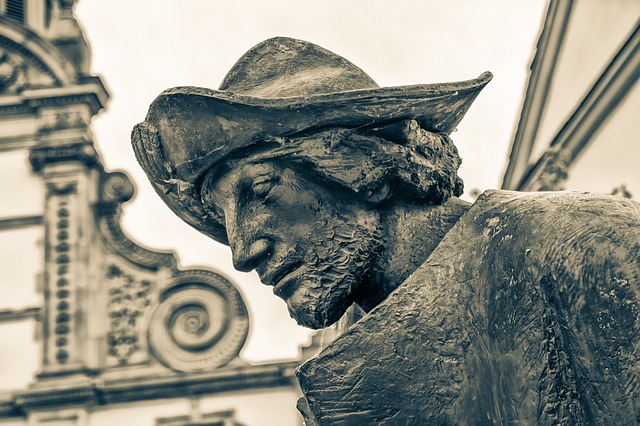 Submitted by Rifkin the Historian on
Submitted by Rifkin the Historian on

Image by analogicus from http://Pixabay.com
When the Puritans colonized New England in the 1600s they were a young rebellious religious movement. Back in England they were trying to overthrow the established Church of England, and here in North America they were trying to create a theocracy. They were a bunch of radicals.
Flash forward one hundred years to the 1700s. The Puritans had become the established religion of New England. Their church was conservative and not interested in changing. Sunday sermons were heavy on the theology and light on the emotion. They were, sad to say, boring. The Puritans had become the thing they had once rebelled against.
In the 1730s and 1740s a new religious movement swept across the colonies. Historians now call it the First Great Awakening, since it was the first of many emotionally charged religious revivals that occurred in America. During the First Great Awakening traveling evangelical ministers crossed the region preaching fire-and-brimstone sermons to large crowds. One famous evangelical of the time, George Whitefield, delivered more than 18,000 sermons. People passed out from overwhelming emotion when he spoke. Whitefield stirred up strong religious feelings wherever he went.
Shadrack Ireland, a pipemaker in Charlestown, Massachusetts, was one of those people who heard Whitefield speak. It had a strong effect on him, and afterwards Ireland declared that something had changed in his mind and body. He realized that he was now perfect and immortal. He was never going to die.
Ireland started to preach to anyone who would listen. According to Ireland, people needed to practice celibacy. No sex please! Only those who had achieved perfection could take spouses and have intercourse. And since they were perfect, they could even take second "spiritual" spouses if they were married. Rules about adultery no longer applied to those who were perfect (like Ireland).
Shadrack Ireland left his wife and six children and moved to Grafton, Massachusetts where he gathered a small group of followers. The authorities in Grafton didn't appreciate his heretical teachings and pressured him to leave. He went to nearby Harvard, where his followers built a large house known as the Square House where they lived communally. It still stands today. Ireland also took a spiritual wife, one Abigail Lougee. He declared himself the Second Messiah, and although he lived a relatively quiet life people came to visit him from other towns for spiritual guidance.
Just a quick aside: Ireland was not unique in his beliefs at this time. He was just one representative of a larger movement. For example, in Easton members of a church also declared themselves immortal and all took new spouses. In Hopkinton, a man named Nat Smith even declared himself God. Smith wore a hat with a sign reading "I am God" and routinely disrupted the town's Sunday meetings by blowing a ram's horn. He eventually became a follower of Shadrack Ireland.
Ireland lived in the Square House for several decades. Did he really think he was going to live forever? Maybe, but it was not to be. One night in September 1778 his followers noticed that he had somehow changed. Ireland told them that his work was done and God was going to take him. He also instructed them not to bury him, though, since the world would end shortly and he would be resurrected. After telling them this he went up to his bedroom and died.
His followers took his body and put it in the cellar. Some accounts say it was placed in a plain wooden coffin, others that it was placed on a stone slab. All accounts agree that his body remained in the Square House's cellar for a long time. So long that it started to smell. Still unwilling to bury their leader, Ireland's followers covered his body with lime hoping that it would cover the terrible stench. It didn't. Finally someone took his body and buried it in unmarked grave nearby.
Although Shadrack Ireland's body departed his spirit may have lingered. After his death some of his followers remained in the Square House until eventually Mother Ann Lee, the spiritual leader of the Shakers, came to Harvard. Most of Ireland's followers became Shakers and Mother Ann took up residence in the Square House. Although she liked the building she felt that Ireland's spirit remained as an evil influence in it. It was so bothersome to her that she banished it to Hell.
Did his spirit really linger, or was this just Mother Ann Lee's way of finally claiming the Square House (and the people in it) as hers? Either way, it was the end of Shadrack Ireland.
Peter Muise
http://newenglandfolklore.blogspot.com/2019/06/shadrack-ireland-and-immortality-cult.html